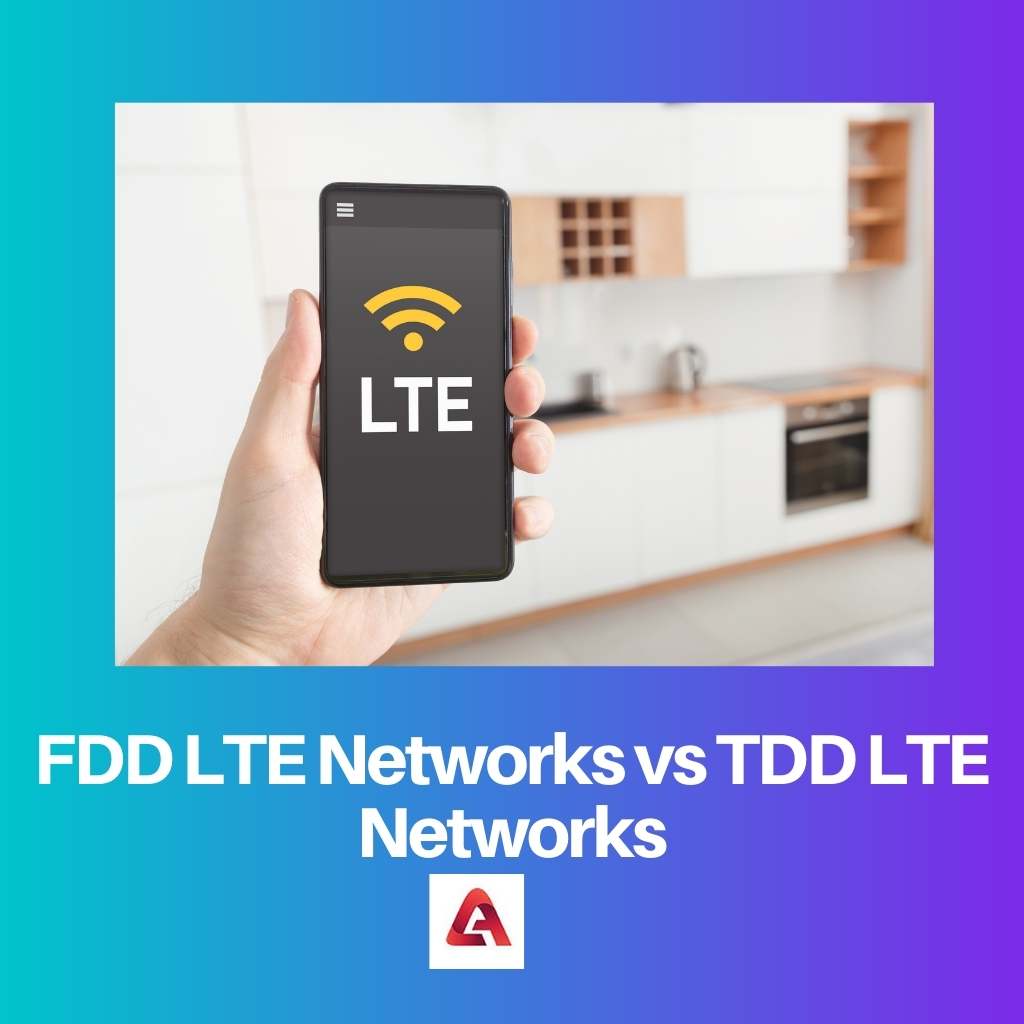LTE (Long Term Evolution) is a fourth-generation communication from the third-generation [project 3GPP. The LTE has got a 10ms frame of duration with 10 subframes.
The subframes have two specific slots, each of 0.5ms duration.
LTE has two duplexing modes: the FDD (Frequency Division Duplexing) and the TDD (Time Division Duplexing).
The mobile technology deployed these duplexes to give high-speed internet access to the people and to also provide a better performance in voice and video calls.
Key Takeaways
- FDD-LTE utilizes paired spectrum blocks for uplink and downlink communication, while TDD-LTE uses a single frequency band for uplink and downlink.
- FDD-LTE provides better coverage and is more suited for voice and data services, whereas TDD-LTE offers higher capacity and is better suited for data-centric services.
- FDD-LTE dominates global networks, while TDD-LTE is more prevalent in China and India.
FDD LTE Networks vs TDD LTE Networks
FDD LTE (Frequency Division Duplexing Long Term Evolution) has two separate frequency bands used for uplink and downlink transmissions. TDD LTE (Time Division Duplexing Long Term Evolution) uses a single frequency band divided into time slots for uplink and downlink transmissions.

FDD LTE stands for Frequency Division Duplex. It is a full-duplex that has symmetric traffic and interferences between the base stations as the transmission and reception is done on different frequencies.
Also, FDD LTE shows both uplink and downlink at the same time.
TDD LTE stands for Time Division Duplex. It is half-duplex. The interferences are done on the same frequencies. TDD LTE can show either an uplink or a downlink at a time.
The TDD LTE is different from FDD LTE because it does not need any special considerations or planning.
Comparison Table
| Parameters of Comparison | FDD LTE Networks | TDD LTE Networks |
|---|---|---|
| Application | FDD LTE shows both uplink and downlink at the same time. | TDD LTE does not show both uplink and downlink at the same time. |
| Special considerations | FDD LTE does not need any special planning. | TDD LTE is different from FDD LTE because it does need some special considerations or planning. |
| Symmetric or asymmetric | FDD LTE has symmetric traffic. | TDD LTE has asymmetric traffic. |
| Full duplex or half-duplex | FDD LTE is called a full-duplex. | TDD LTE is a half-duplex that means that TDD LTE can either uplink or downlink at a time. |
| Interferences | The interferences in FDD LTE between the base stations as the transmission and reception are done on different frequencies. | The interferences in TDD LTE between the base stations as the transmission and reception are done on the same frequencies. |
| Came from? | FDD LTE came from a 3G network migration path. | TDD LTE came from TD-SCDMA. |
| Spectrum | FDD LTE has a paired spectrum. | TDD LTE uses an unpaired spectrum. |
What is FDD LTE Networks?
FDD is called the Frequency Division Duplex. FDD LTE is called a full-duplex because of how it operates. FDD shows both uploads and downloads at the same time.
FDD LTE came from a 3G network migration path
FDD LTE is good for voice calls and video calls with symmetric traffic. The bandwidth with FDD LTE cannot be reallocated.
The uplink frequency of FDD LTE ranges from 777 to 787 MHz, while the downlink of FDD LTE ranges from 746 to 756 MHz. The uplink and the downlink have 10MHz, which the entire frame use.
FDD LTE stations do not receive and transmit at the same frequency, thus they do not each special planning. FDD LTE is migrated from the 3G network path.
The interferences in FDD LTE between the base stations as the transmission and reception are done on different frequencies. FDD LTE has a paired spectrum.
What is TDD LTE Networks?
TDD LTE is called the Time Division Duplex. TDD LTE is a half-duplex, which means that TDD LTE can either uplink or downlink at a time. TDD LTE uses an unpaired spectrum.
TDD LTE does need special considerations or planning. TDD LTE is beneficial for applications that have asymmetric traffic, like online browsing.
The downlink is higher than the uplink. While online browsing and uploading a video, the uplink is higher than the downlink. TDD LTE came from TD-SCDMA.
The interferences in TDD LTE between the base stations as the transmission and reception are done on the same frequencies. TDD LTE is much better in the allocation of traffic than FDD LTE.
Main Differences Between FDD LTE Networks vs TDD LTE Networks
- FDD LTE is called a full-duplex, whereas TDD LTE is a half-duplex.
- The interferences in FDD LTE between the base stations, as the transmission and reception, are done on different frequencies, whereas the interferences in TDD LTE are done on the same frequencies.
- FDD upload and download by dividing the frequency band into two, whereas TDD uploads and download by alternating.
- FDD is called the Frequency Division Duplex, whereas TDD LTE is called the Time Division Duplex.
- FDD LTE is ideal for symmetric traffic, while TDD LTE is ideal for asymmetric traffic.
- TDD LTE is much better in the allocation of traffic than FDD LTE.
- FDD LTE uses a paired spectrum, while TDD LTE uses an unpaired spectrum.
- FDD LTE has come from a 3G network migration path, while TDD LTE came from TD-SCDMA.



